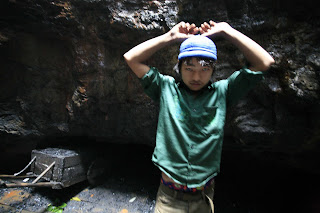
A day in the life of a fashion designer.
She has worked with numerous international labels in the form of Jean Paul, Roberto Cavalli, Guess jeans and owns a private label called ‘Not So Serious’. Pallavi Mohan is living her dream in the realm of becoming one of the renowned fashion designers in the country.
- Joe Hmachhuana
The life of a fashion designer is intimately linked to visions and tastes that change at a moment’s of notice. Designers reflect the society’s sensibilities through factions of design clothing. A great opportunity to wise up the basic knowledge stumbled along on meeting an old friend Pallavi Mohan at a social gathering.
Pallavi finished her graduation from Camberwell College of Art & Design, London and further more importantly she achieved a degree in Textile Design from the Chelsea College of Art & Design. Today Pallavi has been involved in every phase of designing, earning the distinction of running her own private label ‘Not So serious’ which now has been well received across the world and its retail footprint has been increasing swiftly with the support of leading boutiques such as Carma, Ensemble, Aza & Ogaan. Pallavi is the creative force of Magnolia Martinique (textiles industry) where she is the head of product design.
For Pallavi, designing being a creative field, she has been inspired by nature and different cultures. For a very long time her love for travelling helped her immensely to draw new perspectives in her career. Besides it’s the love and passion for fashion designing that keeps her going strong, fashion industry is a highly demanding job which involves risks from the aspects of producing, packaging, delivering and displaying it to the buyers. Perseverance, creativity and a passion to excel are three things that the likes of a person like her would advise to those wanting to start a career in fashion.
On viewing the blogosphere in the gauge of Fashion Street, Pallavi cites 2010 as a year of a mix trend. Her opinion about fashion is simple and familiar. She acquaints everybody is fashion conscious and they are picking up what suits them and that ‘fashion is individualistic and not a blinded trend chase.’
Pallavi was credited as a designer with an outstanding sense of fabric, flawless finish and inspiring originality at the India Fashion Week in New Delhi. Her AW09 collection was also selected by FDCI for the India show in Amalty, Kazakhstan. Her work experience with numerous international labels has given her a privilege of international design sensibility and has broadened her understanding about the demands and functioning of the industry at a global stage.
The parameter of Pallavi’s success in the fashion world has embodied monumentally with the colossal display of her design thrice in a row at Wills India Fashion Week, an Exhibition of her collection in London and Showcase at Prêt a Porter in Paris.
Pallavi has recently showcased her design based on the theme Alice in Wonderland at Wills India Fashion Week 2010 and she will be doing another showcase in Barcelona in June.
On thoughts about her profession; I feel that nobody can teach you to be a fashion designer; one need to have the naturalness and creativity to be able to translate in this profession.
A fashion designer conceives garment combinations of line, proportion, color, and texture. While sewing and pattern-making skills are beneficial, I feel they alone do not create an effect of successful fashion design. Most fashion designers are formally trained but there are a whole lot more needed to kindle a true lifestyle of success in this business...and Pallavi here seems to be proving the right point.
*All thumbs up*




